International
Cuba: “The history of tobacco”

October 17 |
Everyone on the Island knows that this is the longest story in the world, that when your grandfather drops the first word, the knot of worsted is untied, the sentences are chained to each other, the stories are connected to each other and little by little before the eyes is built an eternal road of words that goes around Cuba, goes out to sea and sails around the world until the word tobacco throws twist, ends up in the mouth of a Russian in Siberia.
As far can the stories go as the ships, as close to the sea grow the leaves that Christopher Columbus discovered in the name of the Old World. For more than two centuries, the starting point of this narration has been the hands of the people of Pinar del Río, people from the west, and not precisely the proud conquering the desert, but simple and noble hands that have chosen tradition as a way of life.
Among the modern descendants is Miyelis Canales Machuat, a teacher by profession and vocation, but faced with the vicissitudes of life she had no choice but to take up work on the land as a way of life. Seven years ago her husband passed away, and since tobacco production was the main income for her family, she put all her efforts into running the farm.
But her battles have not been few, last year Cuba registered one of its strongest hurricanes of all times, Ian with category 3 made landfall in Cuba precisely in the town of La Coloma, not far from Miyelis’ farm, who tells us: “when it passed through here, out of 59 tobacco houses that these lands had, only 6 were left standing”.
“I’m going to be honest, I didn’t think that my tobacco house would have been on the ground, completely destroyed, because it wasn’t new, but it wasn’t in such bad conditions, but that cyclone, the hardest part was after the eye passed, everything was destroyed, all these fields were devastated, completely devastated”.
Cuba
Among the modern descendants is Miyelis Canales Machuat, a teacher by profession and vocation, but faced with the vicissitudes of life she had no choice but to take up work on the land as a way of life. I Photo: teleSUR
Miyelis, who at the time, full of tears, did not know what to do, tells that her children were discouraged, they thought it would be impossible to harvest tobacco, they did not know how to raise again a priest’s house because they lacked the resources. The hurricane had left the production of Pinar del Río totally in ruins.
But giving no place to grief, Canales says that she and her children rebuilt a dream based on rubble, rescued the wood and zinc they could and with that they faced hopelessness. They put their feet on the ground and were able to be even one of the few producers who were able to plant in the previous season. With the house half-built, they obtained more than 50 percent of the plan they had to stockpile.
Photo: teleSUR
“Tobacco takes a lot of dedication but the greatest satisfaction is to see the final result, when you have money that satisfies all the basic needs of your house and others that perhaps are not so basic but that make your life more human.”
Miyelis’ life is a sort of odyssey, an incarnation of Homer if you want to compare. This Cuban woman does not give up, she does not stop thinking that the future is one of construction, of “echar pa’ lante”.
The history of tobacco is long, but they always have mouths to tell it, adept at unraveling the mysteries in the leaves. Among the smoke of a smoker, made into faint shapes is the voice of the Taino Indians, the voice that whispers “Cohiba”.
International
Floods in Central Vietnam leave 28 dead, thousands displaced
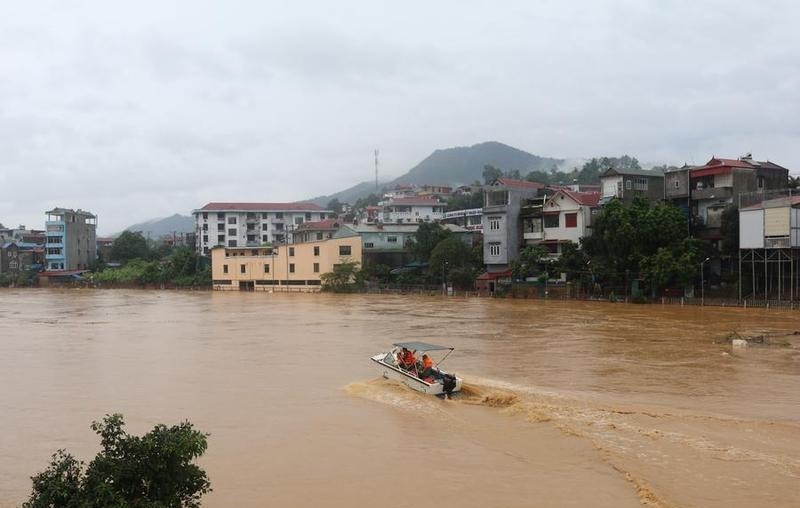
The death toll from heavy rains and flooding in central Vietnam has risen to 28, with six people reported missing and 43 injured, local newspaper VnExpress reported Friday night.
More than 22,100 homes remain flooded, primarily in the cities of Hue and Da Nang. Floods and landslides have destroyed or swept away 91 houses and damaged another 181, the report added.
Around 245,000 households are still without electricity, particularly in Da Nang, where over 225,000 homes are affected.
Additionally, 80 stretches of national highways are blocked or disrupted due to landslides. Authorities expect the flooding to continue for another day or two in the region.
International
FBI foils ISIS-Inspired attack in Michigan, arrests five teens

Kash Patel did not provide further details, but police sources told CBS News that the potential attack was “inspired” by the Islamic State (ISIS).
“This morning, the FBI thwarted a potential terrorist attack and arrested several individuals in Michigan who were allegedly planning a violent attack during the Halloween weekend,” Patel wrote on X.
“Thanks to swift action and close coordination with our local partners, a possible terrorist act was prevented before it could be carried out,” he added.
CBS reported that five people between the ages of 16 and 20 were arrested on Friday. At least one of them was reportedly acquainted with a former member of the Michigan National Guard, who was arrested in May for plotting an ISIS-inspired attack on a U.S. military facility in the Detroit suburbs.
International
U.S. warns China over Taiwan during high-level defense talks in Kuala Lumpur

U.S. Secretary of Defense Pete Hegseth expressed concerns over China’s growing military activity near Taiwan during a meeting on Friday with Chinese Defense Minister Dong Jun in Kuala Lumpur.
“It was a constructive and positive meeting,” Hegseth wrote on X. “I emphasized the importance of maintaining a balance of power in the Indo-Pacific and raised U.S. concerns about China’s actions around Taiwan,” the self-governed island that Beijing claims and does not rule out invading.
The meeting took place on the sidelines of the ASEAN Defense Ministers Meeting-Plus, one day after U.S. President Donald Trump met Chinese President Xi Jinping in Busan, South Korea. According to Trump, Taiwan was not discussed during their talks.
“The United States does not seek conflict and will continue to firmly defend its interests, ensuring it maintains the capability to do so in the region,” Hegseth added in his message.
Friday’s encounter followed a September 9 video call between Hegseth and Dong. Their previously planned meeting at the Shangri-La Dialogue in Singapore was canceled due to Dong’s absence from the event.
Trump’s sit-down with Xi — their first since 2019 — resulted in some trade agreements but avoided addressing the issue of Taiwan, a long-standing source of tension between the world’s two largest powers.
Trump has taken a more ambiguous stance on Taiwan’s future compared with former President Joe Biden, who repeatedly stated that Washington would support Taipei if China launched an invasion. The Republican president has also criticized Taiwan for “stealing” the U.S. semiconductor industry.
-

 International4 days ago
International4 days agoJamaica faces widespread destruction as hurricane Melissa hits the island
-
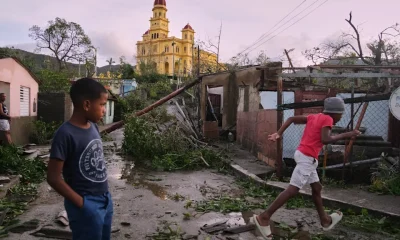
 International1 day ago
International1 day agoHurricane Melissa kills over 30, leaves thousands displaced in the Caribbean
-
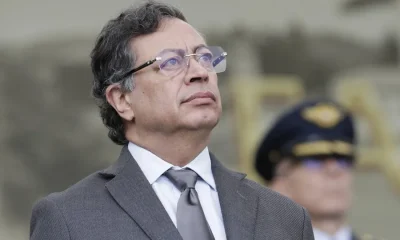
 International5 days ago
International5 days agoColombian president Gustavo Petro denies alleged ties to criminal networks
-

 International3 days ago
International3 days agoMelissa leaves path of destruction in Caribbean, 735,000 evacuated in Cuba
-

 International5 days ago
International5 days agoMexican journalist reporting on drug cartels killed in Durango
-

 Central America4 days ago
Central America4 days agoNew dismembered bodies found in San Juan river days after mass killing in Palencia
-

 Central America4 days ago
Central America4 days agoFour guatemalan soldiers arrested for stealing weapons from Northern Air Command
-
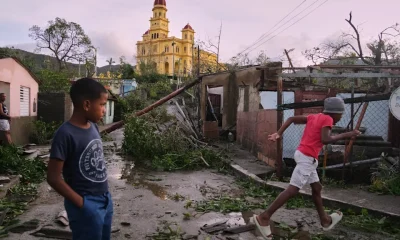
 International2 days ago
International2 days agoHurricane Melissa leaves Jamaican residents homeless as recovery efforts begin
-

 Central America4 days ago
Central America4 days agoArévalo accuses Porras and judge of undermining democracy in Guatemala
-

 Central America5 days ago
Central America5 days agoEl Salvador cracks down on narcotics: 24 tons confiscated in major anti-drug operation
-

 International3 days ago
International3 days agoArgentina’s Milei opens dialogue with parties to push “Second-Generation Reforms”
-

 International1 day ago
International1 day agoU.S. considering airstrikes on military sites in Venezuela, reports say
-

 International2 days ago
International2 days agoUS Deputy Secretary criticizes Mexico’s call to end Cuba trade embargo at UN
-

 International2 days ago
International2 days agoVenezuela warns citizens who call for invasion risk losing nationality
-

 Central America5 days ago
Central America5 days agoEl Salvador’s FGR prosecutes 89,875 gang members under state of exception
-
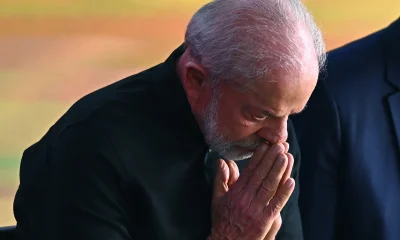
 International2 days ago
International2 days agoBrazilian president defends coordinated anti-drug operations after deadly Rio raid
-

 International2 days ago
International2 days agoTrump orders immediate U.S. nuclear testing, ending 30-year moratorium
-

 International1 day ago
International1 day agoTrump sets historic low refugee cap at 7,500, prioritizes white South Africans
-
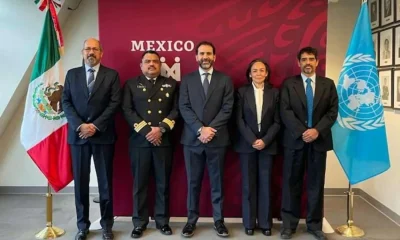
 International2 days ago
International2 days agoMexico advances continental shelf claims at UN Commission in New York
-
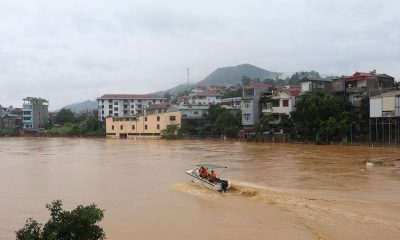
 International9 hours ago
International9 hours agoFloods in Central Vietnam leave 28 dead, thousands displaced
-

 International1 day ago
International1 day agoU.S. warns China over Taiwan during high-level defense talks in Kuala Lumpur
-

 International2 days ago
International2 days agoSimeón Pérez Marroquín, ‘El Viejo,’ detained for role in Miguel Uribe Turbay assassination plot
-

 International1 day ago
International1 day agoUNICEF: Over 700,000 children affected by Hurricane Melissa in the Caribbean
-

 International1 day ago
International1 day agoPope Leo XIV revives Global Compact on Education to confront cultural crisis
-

 International9 hours ago
International9 hours agoFBI foils ISIS-Inspired attack in Michigan, arrests five teens






























